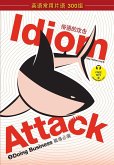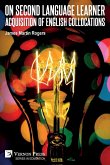While there are studies concerning the acquisition of English articles and some identifiable stages that are based on various perspectives and different empiric data, with several acquisition sequences for ESL learners proposed, the universality and applicability of those proposed sequences remain to be tested. There are also no studies at present that address how L2 learners distinguish a from an, identify the acquisition process related with the zero article, or present a systematic description of noun phrases in conjunction with the use of articles. This book which details an in-depth longitudinal study of Chinese ESL learners' acquisition process of English articles endeavors to fill this need. It combines a qualitative approach with quantitative methods to understand the acquisition sequence of English articles, using the case of a beginner Chinese ESL learner in an American context. The longitudinal data collected during the 13-month period are first carefully indexed using a qualitative-oriented computer software program and then statistically analyzed by using SPSS. An in-depth examination of different types of articles, as well as their relations with noun phrases and other types of determinants, was then conducted using the perspectives gained from both the accuracy paradigm and the usage pattern.
Hinweis: Dieser Artikel kann nur an eine deutsche Lieferadresse ausgeliefert werden.
Hinweis: Dieser Artikel kann nur an eine deutsche Lieferadresse ausgeliefert werden.








